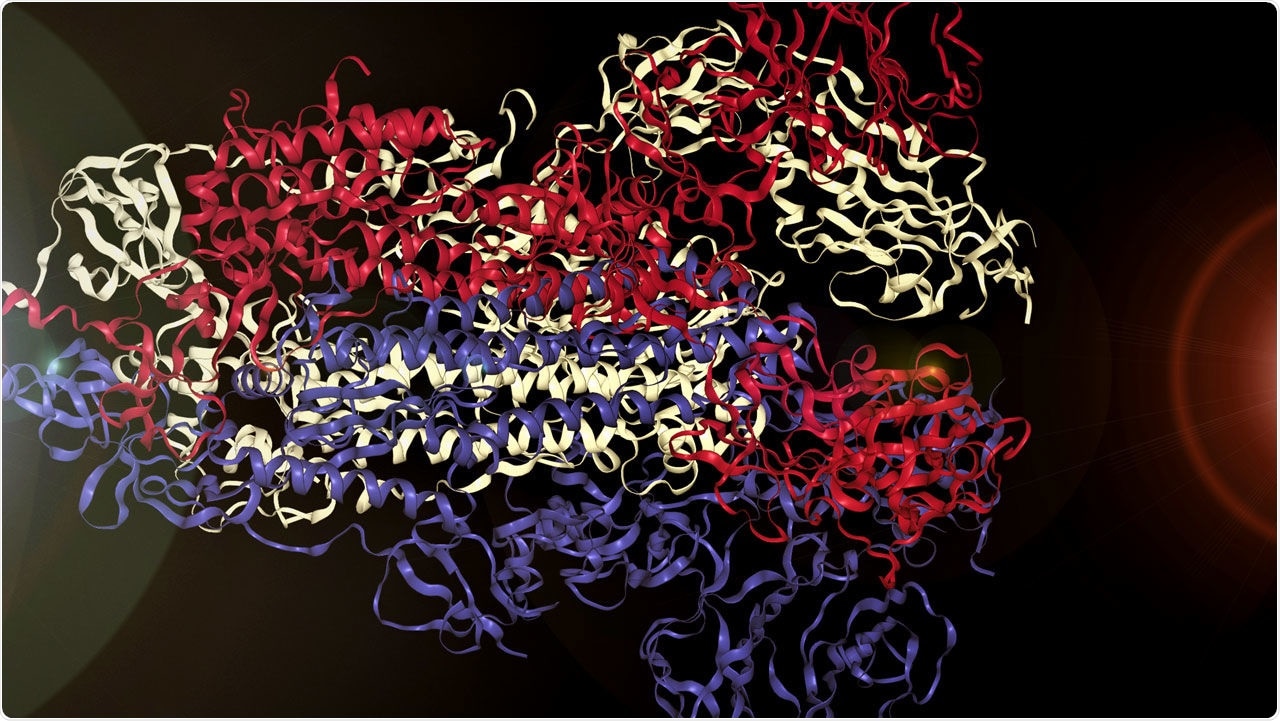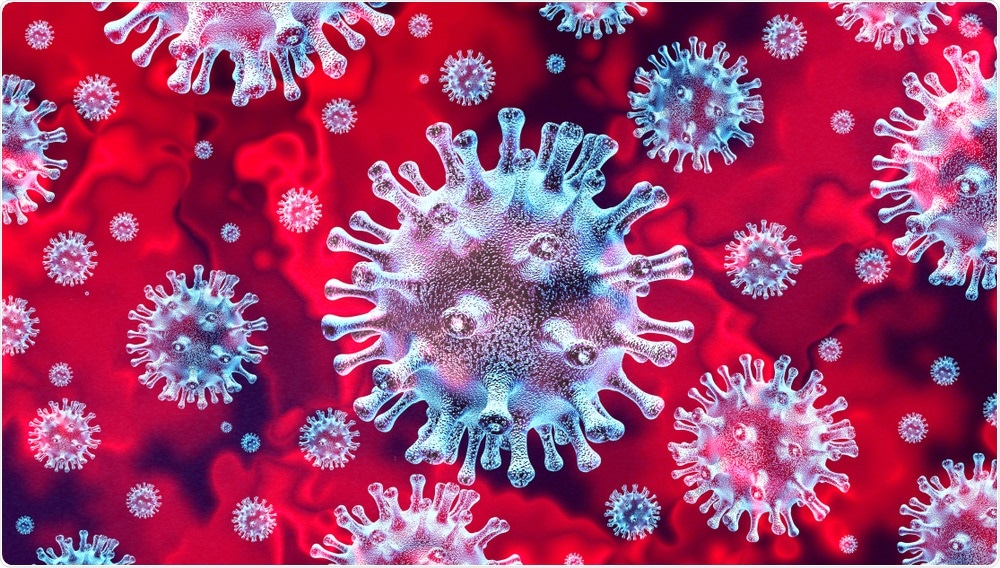Proteins are the bricks and mortar that make up our cells, organs, and body. Alpha helix proteins are especially important. Their spring-like structure gives them elasticity and resilience, which is why skin, hair, feathers, hooves, and even cell membranes are so durable.
As a material scientist, these are some of the most important materials in nature, and we are keen to understand how they form, how they fail, and how we can improve on their design in novel engineered materials.

Image Credit: Markus J Buehler
How did you use artificial intelligence to produce proteins?
Proteins have their language, and we do not know how it works. We do not know what makes a silk protein a silk protein or what patterns reflect the functions found in an enzyme. We do not know the code.
So, using machine learning can be a powerful way to better understand it.
More broadly, proteins reflect a natural language that we do not yet know how to speak. However, we can hear this language by calculating the vibrational frequencies of the molecules making up the proteins.
Each vibrates, due to temperature, at a unique spectrum, and as a well-defined sound (see our 2019 ACS Nano paper: http://doi.org/10.1021/acsnano.9b02180). We can use these basic tones, forming a novel type of musical scale, the amino acid scale, to define sequences in sound.
Rhythms are used to express local structures, and higher-order elements like the folding are expressed in more complex hierarchical features of the musical composition – such as overlapping melodies, strummed chords, and others. The music can be seen as a translation of the protein structure’s various vibrational patterns into an audio signal you can hear and exploit for further analysis.
How can this method be used this method to design new proteins and in what applications could these be used?
We used an artificial intelligence system to study the catalog of melodies produced by a wide variety of different proteins. We had the AI system introduce slight changes in the musical sequence or create completely new sequences and then translated the sounds back into proteins that correspond to the modified or newly designed versions.
With this process, we were able to create variations of existing proteins — for example of one found in spider silk, one of nature’s strongest materials — thus making new proteins unlike any produced by evolution.
Using this, we can make better materials that are stronger, lighter and tunable.
What provoked you to apply your research to COVID-19 and how are you doing so?
The COVID-19 virus spike protein contains three protein chains folded into an intriguing pattern. These structures are too small for the eye to see, but they can be heard!
We represented the physical protein structure, with its entangled chains, as interwoven melodies that form a multi-layered composition.
Hence, the resulting piece is a form of counterpoint music, in which notes are played against notes. Like a symphony, the musical patterns reflect the protein’s intersecting geometry realized by materializing its DNA code.
The SARS-CoV-2 has a spike protein. What is a spike protein and why does it make viruses so contagious?
A spike protein is a crown-like protein that sticks out of the virus, and which gives it its name. They are very contagious as they interact readily with human cell receptors such as ACE2.
When translating the SARS-CoV-2 spike protein into sound, what properties did you discover?
It was amazing to see the incredible complexity of the protein audible in sound and to discover the various ways by which repetition of the protein sequence interplay with variations, and how they intersect through the folded, three-dimensional structure.
Nature offers incredible insight into the structure of its building blocks, and music can be a powerful way to understand it better, and to comprehend its design principles in a different manner
Can this research help our understanding of COVID-19? Could it help find a vaccine or drugs to fight it?
In the longer term, yes. Translating proteins into sound gives scientists another tool to understand and design proteins. Even a small mutation can limit or enhance the pathogenic power of SARS-CoV-2.
Through sonification, we can also compare the biochemical processes of its spike protein with previous coronaviruses, like SARS or MERS. In the music we created, we analyzed the vibrational structure of the spike protein that infects the host.
Understanding these vibrational patterns is critical for drug design and much more. Vibrations may change as temperatures warm, for example, and they may also tell us why the SARS-CoV-2 spike gravitates toward human cells more than other viruses.

Image Credit: Lightspring/Shutterstock.com
We are exploring these questions in current, ongoing research with my graduate students. We might also use a compositional approach to design drugs to attack the virus.
We could search for a new protein that matches the melody and rhythm of an antibody capable of binding to the spike protein, interfering with its ability to infect.
What are the next steps in your research?
Our brains are great at processing sound! In one sweep, our ears pick up all of its hierarchical features: pitch, timbre, volume, melody, rhythm, and chords.
We would need a high-powered microscope to see the equivalent detail in an image, and we could never see it all at once. Sound is such an elegant way to access the information stored in a protein.
Typically, sound is made from vibrating a material, like a guitar string, and music is made by arranging sounds in hierarchical patterns. With AI we can combine these concepts and use molecular vibrations and neural networks to construct new musical forms.
We have been working on methods to turn protein structures into audible representations and translate these representations into new materials. We call the approach to exploit materials in non-conventional ways to form the basis for sound and music “materiomusic” – pushing the boundaries of most musical generation beyond vibrating strings and beyond the completely synthetic sounds of synthesis methods.
Rather, to use quantum chemistry and real physical principles as the basis for forming the canvas of musical composition.
The design of new materials is an essential challenge in developing sustainable technologies – think of lighter, more robust, more resilient materials. Or smart materials that act as sensors.
We can also create awareness of the opposing poles of beauty, life, and death, and understand the concept of deceit as it is at the core of the nature of the virus’ pattern of infection and spreading. And we can hopefully teach many people around the world about proteins – they are the material basis for all life and worth understanding!
You can also think of music as an algorithmic reflection of structure. Bach’s Goldberg Variations, for example, are a brilliant realization of counterpoint, a principle we have also found in proteins.
We can now hear this concept as nature composed it and compare it to ideas in our imagination, or use AI to speak the language of protein design and let it imagine new structures. We believe that the analysis of sound and music can help us understand the material world better.
Artistic expression is, after all, just a model of the world within us and around us. So, there is a lot to learn ranging from human health to biology, to addressing grand challenges.
Where can readers find more information?
You can listen to protein sonification’s and other materiomusical compositions here: https://soundcloud.com/user-275864738
About Professor Markus Buehler
Markus J. Buehler is the McAfee Professor of Engineering at MIT, and a composer of experimental, classical and electronic music, with an interest in sonification.
Using an approach termed "materiomusic", his artistic work explores the creation of new forms of musical expressions - such as those derived from biological materials and living systems - as a means to better understand the underlying science and mathematics.
One of his goals is to use musical and sound design as a novel and abstract way to model, optimize and create new forms of matter from the bottom up, and to assess cross-system design relationships. He is also interested in research to explore relationships between classical music, mathematics, and the physical and biological sciences, and in the mapping of models of consciousness across systems.
In recent work, he has developed a new framework to compose music based on proteins – the basic molecules of all life, as well as other physical phenomena such as fracturing, to explore similarities and differences across species, scales and between philosophical and physical models.
His scholarly work is highly cited and includes more than 450 articles on computational materials science, biomaterials, and nanotechnology, many in high-impact journals. He authored two monographs in the areas of computational materials science and bio-inspired materials design and is a founder of the emerging research area of materiomics.
He is a dedicated educator and a gifted teacher and has appeared on numerous TV and radio shows to explain the impact of his research to broad audiences.